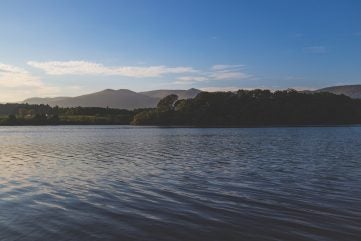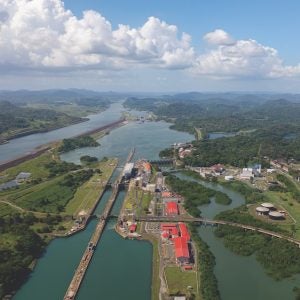
Environmental data is to be collected from a 2m high floating buoy installed at Gartmorn Dam in Scotland. With state-of-the-art sensors, the buoy can measure water quality in near real-time, sending data over mobile phone networks to scientists, governmental organisations, and local communities.
This latest buoy at Scottish Water’s oldest dam is one of several that have been deployed on water bodies across the Forth Valley. They form part of the Forth Environmental Resilience Array (Forth-ERA) programme led by Scotland’s International Environment Centre (SIEC), based at the University
of Stirling where scientists are undertaking world-leading research.
Buoys have already been deployed at Carron Valley Reservoir and Linlithgow Loch, and researchers are exploring further locations in the Forth Estuary at Alloa, Kincardine and east of the Forth Bridge, as well as at Loch Katrine and Gladhouse Reservoir.
Ambitious project
Forth-ERA is described as being a first-of-its-kind digital observatory of the Firth of Forth’s entire water catchment. It will enable scientists to undertake groundbreaking research, as well as helping local and national organisations to undertake data-led, evidence-based environmental management. In addition to water quality, Forth-ERA will also support improved monitoring of biodiversity, floods and droughts, and air quality.
Professor Peter Hunter, Forth-ERA Science Director at SIEC, said: “This deployment marks the start of an ambitious project to understand changes in water quality and biodiversity at Gartmorn Dam, and to develop evidence to inform future management of the site.”
The buoy is expected to be in place for several years to maximise the value of data it collects. Additional devices to collect environmental data for the project will also be installed on land around Gartmorn Dam. Eco-acoustic sensors will help monitor bird species using song recordings where automatic analysis can identify species, with bat detectors providing information on bat activity and species using ultrasonic recordings. To monitor the activity of mammals around the dam, wildlife cameras will also be placed across the site.
Established as part of the Stirling and Clackmannanshire City Region Deal, Scotland’s International Environment Centre is a pioneering collaboration in the Forth Valley, driving the creation of a net zero regional economy and acting as a global example of low-carbon growth.






